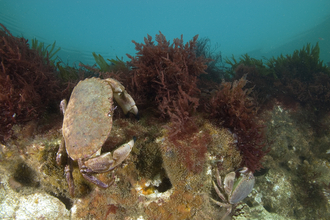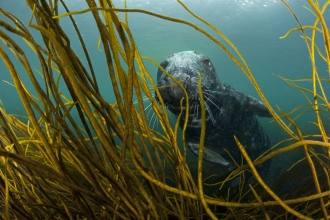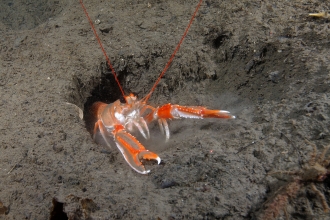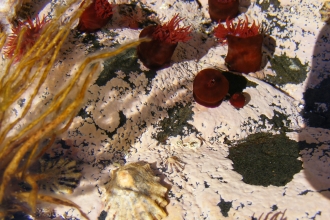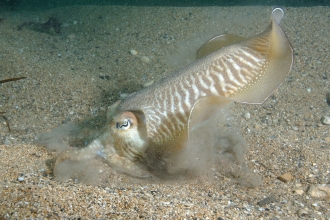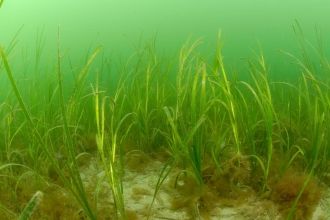Honeycomb worm ©Julie Hatcher/Dorset WT
Biogenic reefs
What is it?
Biogenic reefs are made up of hard matter created by living organisms. The reefs are raised above the seabed. Reefs can grow to be several metres in height and diameter, providing important habitat for a number of species. A study of a reef in the Wash discovered 88 crevice species inhabiting the reef.
Why is it like this?
In UK waters, they are typically made by blue-or horse mussels or by honeycomb-or ross tubeworms. The blue and horse mussels create reefs by binding dead and living shells together using sand and mud. The honeycomb and ross worm reefs are called Sabellaria reefs (the latin name for the worms in question) and are created by tubes of sand. They are generally found in more exposed water and shores allowing currents to deposit new sand for continual building up of the reef structure.
Distribution in the UK
As there are only a few species that are capable of creating biogenic reefs, they are limited in distribution. They are mainly found constantly submerged below the lowest tidal point (subtidal), but they can extend onto intertidal areas in some places. Larger distribution areas are found on the South/West and West coast and with a northern limit at the Outer Hebrides. Ireland has a few recordings.
What to look for
Many biogenic reefs are hidden beneath the waves, but some can be spotted on our shores at low tide.
When the tide goes out, honeycomb worm reefs can be seen attached to hard surfaces such as rocks, boulders and even coastal defence structures. Look closely at their intricate form and you’ll see how they got their honeycomb name!
A falling tide can also reveal blue mussel beds, a rough carpet of shells held together by byssus threads – strong, silky strands that each mussel produces to anchor itself to the seabed and to other mussels. Look out for barnacles fixed onto the mussel shells and small crabs, brittlestars and sea snails hiding in the gaps until the tide returns. Gulls, whelks and even otters can be spotted feasting on blue mussels.
Other biogenic reefs lie underwater and can only be spotted on a Scuba dive. Maerl beds – formed from red seaweed with hard chalky skeletons – turn the seabed bright pink! In amongst the pink, look out for scallops, sea hares and the juvenile fish that use these reefs as a nursery area.
Flame Shells build their own nests from shells and stones, with hundreds of nests combining to form a dense bed. This provides a stable settling spot for scallops, as well as a home for young fish, seaweeds and over 250 types of invertebrate!
Conservation
Changes to the distribution of sand caused by physical disturbance such as dredging, trawling and construction of sea defences has a significant effect on the worms ability to generate reefs. Dredging and trawling can also act to destroy already established reefs, whilst scallop dredging can seriously damage reefs created by mussels.
Slowly generated reefs, built over a long period of time, are not quickly replaced, and the damage affects not only to the mussels and tubeworms but also the species that inhabit these living reefs.
The Wildlife Trusts are calling for nature's recovery at sea. You can help by pledging your support and becoming a Friend of MCZs.

